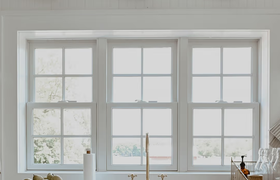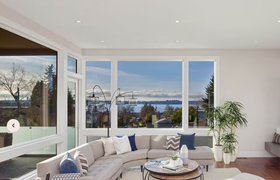Unlocking the Timeless Charm
Colonial homes are an embodiment of timeless charm and historical significance, evoking a sense of nostalgia and grace that captivates admirers across generations. These architectural gems date back to the colonial era and have become a staple of traditional American design. To preserve the essence of your colonial home while infusing it with modern comfort and energy efficiency, upgrading your windows is an excellent step.
Windows are not just portals to the world outside; they play a pivotal role in defining a colonial home's character. In the 17th and 18th centuries, colonial architects meticulously crafted windows to complement the overall aesthetics, often incorporating multiple small panes of glass in symmetrical patterns. These multi-paned windows, such as six-over-six or nine-over-nine configurations, became a hallmark of colonial architecture.
When replacing windows in your colonial home, it is essential to find a delicate balance between preserving the traditional design and integrating modern features. Luckily, advancements in window manufacturing have made it possible to recreate the appearance of historical windows while incorporating energy-efficient materials.
- Window Styles:
- Double-Hung Windows: The quintessential choice for colonial homes, double-hung windows maintain the traditional look with two operable sashes. Opt for models with divided light panes to mimic the historical style.
- Casement Windows: Ideal for achieving that classic yet practical touch, casement windows open outward with a crank, offering unobstructed views and excellent ventilation.
- Fixed Sash Windows: To maintain the traditional appearance without sacrificing energy efficiency, consider using fixed sash windows for non-operational spaces.
- Grid Patterns:
Embrace the colonial aesthetic by selecting the right grid pattern for your windows. Popular options include:
- Colonial Grid: This design features two vertical and two horizontal bars, creating six individual panes within the frame. It aligns perfectly with the colonial era's window design.
- Diamond Grid: A diamond-shaped grid pattern adds a touch of elegance and complements colonial architecture beautifully.
- Material Choices:
When it comes to materials, you have several choices. While wood was the primary material used in the colonial era, it requires regular maintenance. Alternatively, you can opt for:
- Fiberglass: This material offers excellent durability and can be painted to match the desired color scheme while resembling the appearance of wood.
- Wood-Clad Windows: These windows combine the classic charm of wood on the interior with a low-maintenance exterior, usually made of vinyl or aluminum.
- Energy Efficiency:
Old, drafty windows can lead to significant energy loss. Modern windows come with energy-efficient features like Low-E glass, double or triple glazing, and weatherstripping, helping you save on utility bills while maintaining a comfortable indoor temperature.
- Seek Professional Advice:
Preserving the authenticity of your colonial home's windows is a delicate task. Seeking advice from historic preservation experts or architectural consultants will ensure your window replacement aligns with the home's original character and meets any local preservation guidelines.
Upgrading the windows in your colonial home is a step towards preserving its historic charm while embracing modern comfort and energy efficiency. By carefully selecting window styles, grid patterns, and materials, you can retain the essence of colonial architecture while enhancing the overall appeal of your cherished home. Let the windows become the timeless eyes of your colonial abode, inviting both natural light and admiring glances for years to come.






